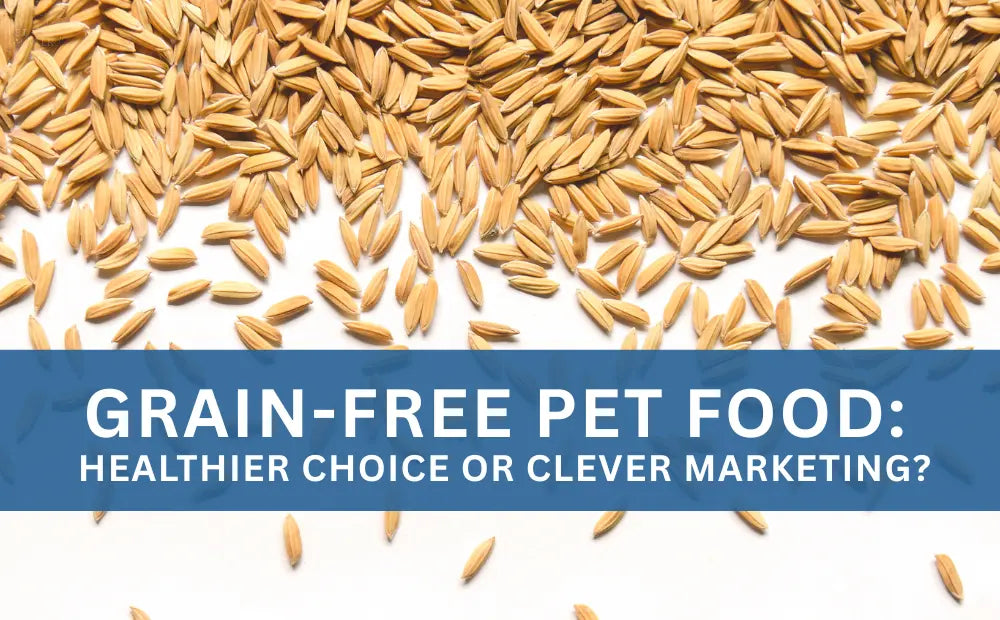
Grain-Free Pet Food: Healthier Choice or Clever Marketing?
Grain-free diets have exploded in popularity, promising a healthier, more “natural” way to feed pets. But eliminating grains doesn’t always mean better nutrition. In many cases, grains are simply replaced with other carbs like peas, lentils, or potatoes—sometimes creating even starchier formulas. Research shows true grain allergies are rare, and most food sensitivities are linked to proteins, not grains. While concerns about grain-free diets and heart health are still under investigation, one thing is clear: balance and completeness matter more than any single ingredient.
The Rise of Grain-Free Diets
Over the last decade, “grain-free” has become one of the hottest selling points in pet food marketing. The idea is simple: eliminate grains for a healthier, more natural diet.
But here’s the catch—removing grains doesn’t automatically make food healthier. Many grain-free kibbles simply swap grains for other carbohydrates like potatoes, peas, or lentils. Some even end up with more carbs than regular kibble.
And because starch is needed to bind kibble together, low-starch recipes can cause digestive issues, leading to loose stools in some pets.
Are Grains Bad for Pets?
Grains have been unfairly painted as common allergens, but research tells a different story. Most pet food allergies are caused by proteins—like beef, chicken, or dairy—not grains.
True grain allergies in pets are rare. In fact, a pet can only develop an allergy to a food they’ve eaten before, meaning grains they’ve never been exposed to can’t be the cause of a reaction.
The Grain-Free and Heart Disease Debate
Some studies have suggested a possible link between grain-free diets and dilated cardiomyopathy (DCM), a type of heart disease in dogs. While research is ongoing, the FDA has investigated whether certain grain-free formulations—especially those heavy in legumes—may interfere with taurine absorption, which is critical for heart health.
The science isn’t conclusive yet, but it’s a reminder that nutrition balance matters more than a single ingredient choice.
How to Decide if Grain-Free is Right for Your Pet
The best reason to feed grain-free? A confirmed, veterinarian-diagnosed grain allergy. Otherwise, the focus should be on:
-
Nutritional completeness
-
High-quality protein sources
-
Transparent sourcing
-
Proven digestibility
Unless your vet recommends avoiding grains, there’s no need to skip them. Many pets thrive on diets that include whole grains as part of a balanced formula.

The Bottom Line
Grain-free pet food isn’t inherently better or worse—it’s just one of many feeding options. Marketing has made it seem like a health upgrade, but the real measure of quality is in how well the food meets your pet’s overall nutritional needs.
Before switching diets, talk to your vet and look for brands that prioritize complete, balanced nutrition over trendy label claims.
